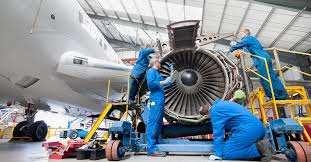In the fast-paced aviation industry, safety, precision, and reliability have always been paramount. At the core of maintaining these standards is the Maintenance, Repair, and Overhaul (MRO) sector, which ensures that aircraft operate at peak performance and remain airworthy. On the sidelines of the recently concluded Aero India 2025, Manoj Kumar Singh, Chief Customer Officer, Aviation, Aerospace & Defence at Ramco Systems, shared his insights on how the integration of Generative AI and other cutting-edge technologies is transforming MRO operations and taking flight safety to unprecedented levels.
MROs play a crucial role in flight safety by maintaining strict standards and proactively addressing risks. “However, as the industry evolves, so do its challenges—aging fleets, increasing operational complexity, and the need for faster turnaround times,” says Singh. “Enter advanced technologies like Generative AI (Gen AI), IoT, and automation, which are revolutionizing MRO processes and taking flight safety to new heights.”
Transforming MRO Planning and Operations
Gen AI and automation are streamlining MRO workflows, reducing turnaround times, and increasing efficiency.
“When airlines send aircraft or engines for repair, they provide MROs with work scope documents—often in unstructured formats like PDFs. Extracting data from these manually is time-consuming. Optical Character Recognition (OCR) and automation now enable seamless extraction and system integration, accelerating planning and reducing errors,” states Singh.
According to him, during maintenance checks, when defects are found, AI-powered MRO software analyses historical records to suggest previously resolved similar issues, providing mechanics with resolution options, manuals, and required parts data. “Gen AI extends these capabilities by allowing mechanics to converse with the system, ask questions, and receive immediate guidance. After completing tasks, it assists with automated report generation, enabling mechanics to focus on their core work. Supervisors can also instantly track task status, eliminating time wasted searching through systems,” he says.
Flight Safety through Predictive Analytics
IoT, AI, and machine learning have made predictive maintenance a reality, allowing MROs to forecast and prevent failures before they occur. Modern aircraft components are embedded with smart sensors that continuously monitor their condition. “These sensors transmit real-time data to machine learning models, which analyse it alongside historical records to predict when components may fail. This enables MROs to optimize maintenance schedules, reduce unexpected breakdowns, and ensure aircraft remain flight-ready,” explains Singh.
Optimizing Maintenance Execution
Traditionally, mechanics rely on paper-based task cards, which are prone to inefficiencies. Digital task cards, powered by AI, provide real-time updates, step-by-step instructions, and access to historical data, minimizing errors and enhancing precision.
“Gen AI also improves discrepancy detection by analysing maintenance logs through image recognition and natural language processing. AI can flag recurring issues, suggest corrective actions, and ensure no detail is overlooked, significantly boosting maintenance accuracy and safety,” he adds.
Supply Chain Optimization
Delays in sourcing parts can ground aircraft, disrupting operations. “AI-powered supply chain solutions use predictive analytics to forecast demand, optimize stock levels, and automate routine purchases, ensuring critical parts are available when needed,” says Singh.
Technology also ensures that no counterfeit part makes it onto the aircraft during repair and installation by verifying the authenticity of the part’s history and condition using technologies like blockchain. “Enhanced supply chain visibility provides real-time tracking of parts beyond warehouses, including items in transit, under quarantine, or awaiting repair, improving planning and minimizing delays,” he explains further.
Training and Skill Development
“The human element remains essential in MRO operations,” notes Singh. “AI-powered training platforms using Virtual Reality (VR) and Augmented Reality (AR) create immersive simulations, allowing technicians to practice complex procedures in a risk-free environment.”
These platforms improve skill development, ensuring personnel are well-prepared for real-world challenges. Technology also ensures that only trained, certified, and qualified technicians work on repairs and sign off on work, making the aircraft airworthy as per regulatory requirements.
Meeting the safety challenges requires bold innovation from those shaping the future of aviation safety.
As the aviation industry is at a turning point, with safety and efficiency demands reaching new heights, Ramco’s recently upgraded aviation enterprise software Ramco Aviation 6.0 is built to tackle the challenges of tomorrow through optimized usage of advanced AI technology, predictive analytics, IoT, VR and AR.
Ramco is leveraging this unique opportunity to lead this transformation, setting new benchmarks for excellence and ensuring the skies remain safe for generations to come. “By adopting these cutting-edge technologies, MROs can truly take flight safety to new heights,” Singh concludes.

